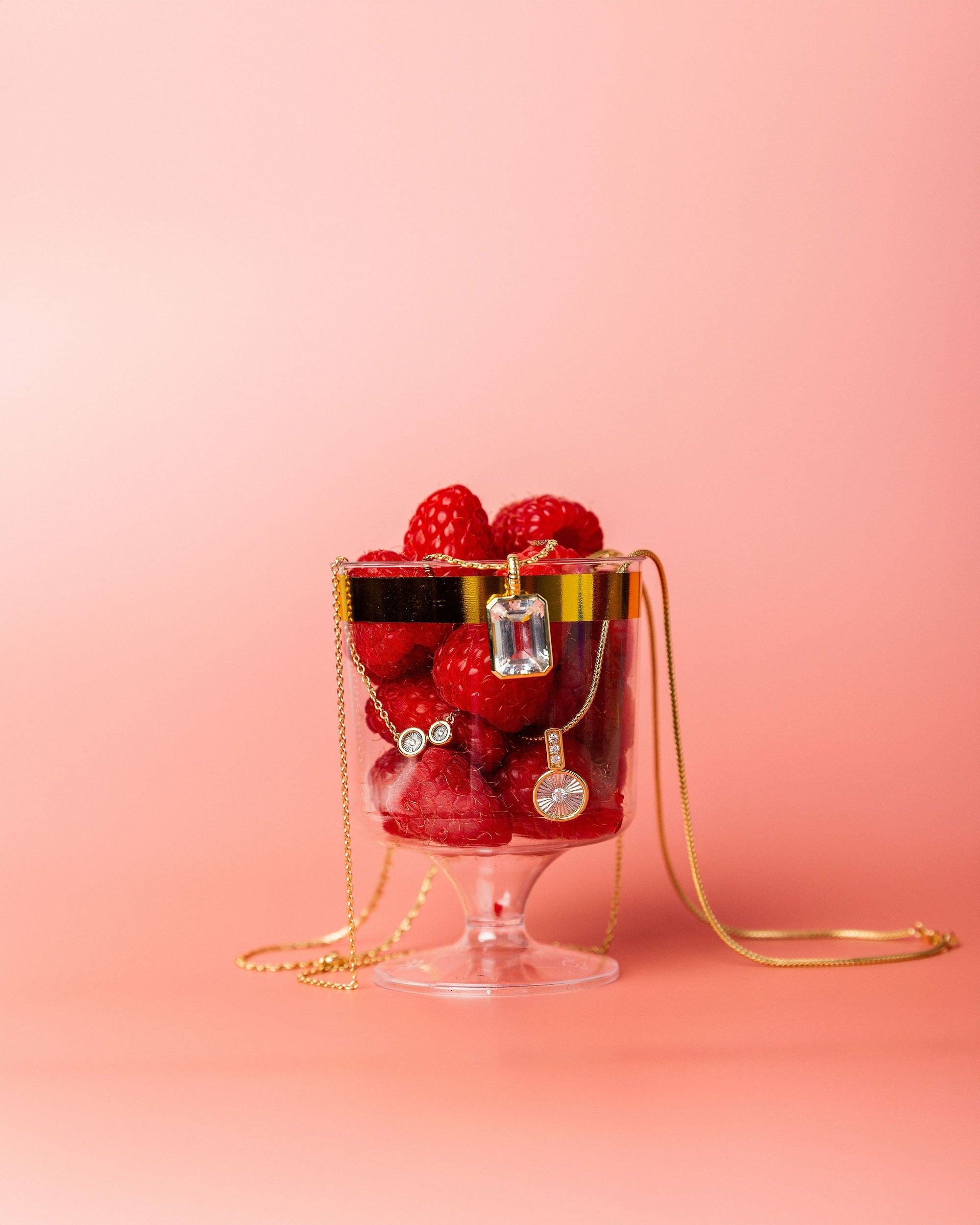Introduction
Understanding the gold karats difference is fundamental when selecting fine jewelry. Whether considering 14k vs. 18k. vs. 24k gold, the karat level impacts durability, appearance, and investment value. This guide provides a complete breakdown of the differences between gold karats, offering you the insight needed to choose the gold purity that matches your lifestyle and aesthetic goals.

What Is a Karat in Gold?
A karat, often abbreviated as "k," measures the purity of gold. In pure form, gold is designated as 24k, meaning it contains 100% gold without any other metals mixed in. By contrast, 18k gold contains 75% gold and 25% alloy metals, while 14k gold is composed of 58.3% gold and 41.7% other metals such as silver, copper, or zinc. Understanding this difference between gold karats allows buyers to better match their jewelry needs with the appropriate gold composition.
14k Gold: Overview, Pros, and Cons
14k gold contains 58.3% pure gold, alloyed with 41.7% other metals to improve durability. As a result, 14k gold is an outstanding choice for everyday jewelry because it resists scratches and dents better than higher-karat golds. Compared to 18k and 24k options, 14k gold is more affordable, making it ideal for buyers looking for a combination of beauty and practicality. However, the color of 14k gold is slightly paler compared to 18k gold, and it carries less intrinsic value due to its lower gold content. When comparing 14k vs 18k rose gold, 14k options tend to appear slightly lighter and more subtle, a factor that some buyers prefer for understated elegance.
18k Gold: Overview, Pros, and Cons
18k gold, containing 75% pure gold, provides a luxurious, rich appearance that appeals to those seeking prestige and color depth. Its vibrant yellow tone is more noticeable than that of 14k gold, giving jewelry a luxurious look often associated with high-end pieces. Though softer than 14k gold, 18k remains durable enough for occasional or semi-regular wear, making it a favorite choice for engagement rings, necklaces, and luxury watches. The main drawback is the higher price tag compared to 14k gold, and a slightly greater susceptibility to surface scratches due to its higher gold content. When discussing the 14k gold vs 18k gold price difference, it is important to note that the higher cost reflects the greater quantity of pure gold, which also influences the jewelry’s long-term value.

24k Gold: Overview, Pros, and Cons
24k gold represents gold in its purest form, with no added metals. It exhibits a stunningly bright, deep yellow color that is instantly recognizable. Due to its purity, 24k gold is highly valued for investment purposes and cultural or ceremonial uses. However, it is not typically recommended for everyday jewelry because it is soft and easily scratched or bent. Jewelry crafted from 24k gold is often reserved for special occasions or heritage pieces. In comparing 14k vs. 18k. vs. 24k gold, 24k offers the highest purity but the least practicality for everyday wear.
Side-by-Side Comparison: 14k vs. 18k vs. 24k Gold
When comparing 14k, 18k, and 24k gold, the differences are significant. 14k gold offers the best durability, making it perfect for everyday wear. 18k gold strikes a balance between luxury and strength, making it suitable for special occasions. 24k gold, being pure, is treasured for its unmatched color and cultural importance but is rarely practical for daily use. Understanding these distinctions simplifies the decision for anyone evaluating 10k vs 14k vs 18k vs 24k gold.
How to Choose the Right Gold for Your Lifestyle
Choosing between 14k or 18k gold which is better depends largely on your intended use. For jewelry that will endure daily exposure to activities and minor impacts, 14k gold is the better choice due to its strength and lower price point. For jewelry worn primarily during special events, where appearance is paramount, 18k gold offers the luxurious aesthetic many desire. Individuals concerned with heritage, ceremonial use, or investment value may find that 24k gold, despite its delicacy, fulfills their specific needs. When comparing 10k vs 14k gold vs 18k, 14k gold offers the best compromise between beauty, durability, and cost, especially for modern buyers who value practicality as much as appearance. A perfect example of versatile gold craftsmanship can be found in our Solid Gold Doughnut Band Rings, crafted for daily elegance and resilience.

Explore Bondeye Jewelry’s Gold Collections
At Bondeye Jewelry, you will find thoughtfully curated collections that embrace the unique beauty of gold. Whether you are searching for designs perfect for everyday elegance, statement pieces that captivate, or meaningful jewelry crafted to celebrate life's milestones, the Bondeye Collections offer a piece for every story. Each item showcases Bondeye's commitment to fine craftsmanship, innovative design, and exceptional quality, allowing you to wear jewelry that is as resilient as it is beautiful. Explore the complete range and discover timeless gold jewelry designed for every moment that matters.
Conclusion: Finding Your Perfect Gold Match
Choosing the right gold purity ultimately depends on your personal needs and preferences. Buyers who prioritize strength and affordability often prefer 14k gold. Those seeking a richer hue and a balance of prestige and practicality might choose 18k gold. Individuals looking for the ultimate in purity and cultural significance may invest in 24k gold. For those seeking timeless quality and beauty, explore our Fine Jewelry Collection to find a piece that speaks to your style and values. For readers interested in deeper scientific insights, an excellent external resource on how gold is alloyed can enhance your understanding of these differences.


